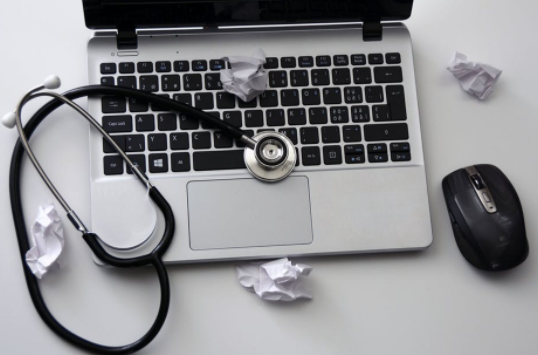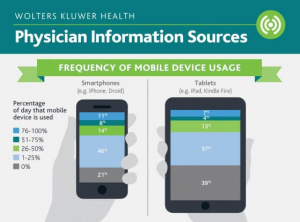It seems like our doctors are always extremely busy, overworked, and hard to reach. This hinders the channels for personal connection and effective communication in healthcare. Often, just to talk with our doctor for a few minutes to ask for advice can be an arduous and expensive task. This discourages the primary and preventive care interactions that have been shown to be crucial in improving health, quality of life, and maintaining affordability.
To combat this, healthcare providers such as doctors and nurses need more effective communication techniques patients can rely on and utilize. Having such techniques in place will put us on track to a healthcare system that is more holistic in its approach and personable in its mechanism. Electronic and information technology such as texting and mobile apps offer a variety of approaches to effective communication healthcare providers can implement.
Effective Communication Techniques Patients Want
Text Message Reminders for Patients
A simple and effective communication patients have been shown to enjoy is receiving text message reminders. This can help ensure patients know their upcoming appointments by automatically sending them a text at a preset time interval before their appointment. This provides great value for reducing the administrative burden of appointment planning and reduces the rate of missed appointment.
Message Your Doctor
Doctors often require you to come in for an appointment to talk to them. This is partly due to insurance often requiring a physical appointment for reimbursement, but also because it is difficult for doctors to evaluate a patient and meaningfully answer their question without directly observing them. However, if a doctor patient relationship has already been formed, it can be very beneficial to overall patient satisfaction and health to have a direct means of quick communication.
Patients though often want a way to simply communicate electronically with their doctors such as sending them atext message. To message your doctor is almost impossible as they don’t often utilize direct contact email or messaging services. This can be useful for asking simple questions, when seeking advice, or provide additional information. By having this option patients can often save on the costs of an in person visit when unnecessary, and therefore insurance companies should provide channels of reimbursing to message your doctor.
Doctor Call App
A doctor call app or web service are also examples of communication systems healthcare providers can use to improve their patient’s satisfaction. Similar to messaging your doctor, giving them a call can be a lot better in quickly exchanging and communicating information. Unlike messages, phone calls and video chats can sometimes be reimbursed and therefore it can be beneficial to run them on a designated software such as a mobile or web app which can track the calls for billing.
Doctor call apps can be a great tool for chronic and geriatric care which often require constant medical attention. Patients living under chronic or geriatric care conditions could end up spending a lot of time coming in and out of doctor’s offices and hospitals. In many cases the in-person meeting is unavoidable, but with the advent of remote monitoring using wearable health tracking sensors it is becoming more feasible to cut down on them. This is likely to improve patient living conditions and reduce the burden or healthcare services.
Conclusion
Effective communication between patient and doctors is an important tenant of a holistic health approach. By putting small amounts of effort such as frequent consultations and regular primary care visits, a lot more can be gained from healthcare services and faithfully executing these practices can lead to savings in the long run. Having effective communication in healthcare is an important building block of having a holistic healthcare approach be the norm of services and not the outlier. It is important for doctors and patient to actively engage and seek new means of private, secure, and meaningful communication.





The text messages work great when the doctors office has the right number – seems several people are using mine for their doctors. And last time checked I didn’t need an OBY. Both the receptionist and I got a chuckle for the day – I do call and let them know its the wrong number.
The moral to my story – make sure that the doctor gets the right number for the text.
That’svery true. That’s why actually texting your doctor falls under HIPAA privacy rules so it is often recommended that most if not all instant messaging communication with your provider be done in a secure messaging platform. Many EHR’s have built in direct messaging (although it is used sparingly in the real world), also there are several mobile and web apps that handle secure messaging for the healthcare field.
I recently received a surprise text message for my dental appointment. This included the name of the dental facility, address (in case I forgot), a google map on how to get there (in case I didn’t know), their phone number if my plans change, the doctor’s name, appointment time and even a response from me to confirm receiving their text with a YES or STOP if I wanted to opt-out.
I like having this feature as a great reminder. It let’s me know they are current with technology changes, and not afraid to use it as an effective communication tool.
Yes it’s such a simple solution that we sometimes take for granted how easy it is in todays age to have effective channels of communication with our healthcare providers. I’m glad you had a good experience with such technology/techniques and I hope they keep making our lives easier with features like this.
Hello! What a great article this is. I have also gotten text messages from my dentist telling me what appointments are available. I think this is so very helpful! And I appreciate that the medical field is taking into account how to best serve the population. After all, if care is supposed to be personal, lets make it feel like that.
It is amazing to me how many layers are put nto place so that one cannot speak directly to their health care practitioner. That I think is not acceptable. If we cannot have direct healing communication, what is the point then?
Thank you for this, ariel
Yes it seems like corporate and public policy, as well as insurance make it impossible to have a real connection with a doctor or a healthcare facility. Going to the doctor isn’t supposed to be like going to get something from the store. I think it is up to the consumers to support new products and models that provide us with more convenient and personable solutions that have to care about customer satisfaction. I have hope for the future of our medical system though with the help from innovations of technology.